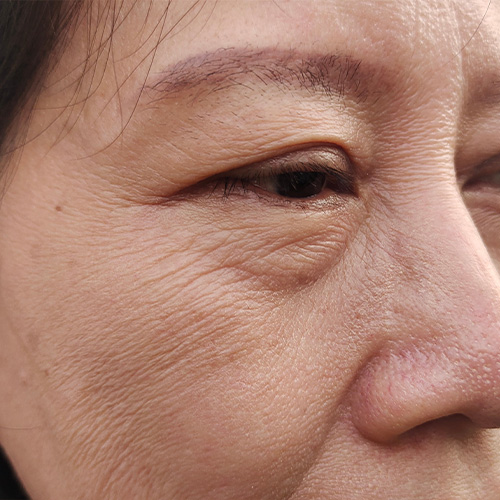As we age, our skin changes. Skin laxity & Sagging is a common complaint with aging skin. Youthful, healthy skin can be maintained with proper treatments and consistent at-home care. Whether you’re starting early with preventative measures or want to restore lost volume, we proudly offer non-invasive technologies that work against time.
Skin Laxity and sagging occur from the loss of elasticity and firmness of the skin. As we age, our skin produces less collagen and elastin, which are the building blocks for giving our skin support and structure. This can lead to a sagging or drooping appearance, particularly in the face, neck, arms, and abdomen.

+ Filler
+ Radiesse
+ Beauty Booster
+ PRP
+ Photofractional
+ Skin Tightening
+ Non-Surgical Face Lift
+ Ultherapy
+ Laser Eye Renewal
+ Laser Lip Renewal
+ Laser Neck Renewal
Producing less collagen and elastin and experiencing volume loss is a part of the natural aging process, but it can be delayed with many lifestyle changes.
Other factors that cause laxity and sagging include weight fluctuations, genetics, environmental pollutants, sun exposure, stress, hormones, diet, and smoking.
Yes, lifestyle changes such as maintaining a healthy diet, exercising regularly, avoiding sun exposure, and quitting smoking may help improve the severity of skin laxity.
Like all medical procedures, there are risks associated with Skin Laxity & Sagging treatments; Including but not limited to infection, scarring, and skin discoloration. It is important to discuss any potential risks with your provider before undergoing any treatment.
We recommend coming in for a complimentary consult to discuss individual goals. Your provider can assess your medical history, skin quality, the severity of skin aging, concerns, lifestyle, and goals to tailor a plan to best suit you.
The effects of non-invasive treatments for sagging skin vary depending on the treatment and the individual, and most results can last for several years, though Skin Laxity & Sagging will continue as the natural aging process takes over.
PRODUCT RECOMMENDATIONS
Terms and conditions apply.
Follow our socials to stay up-to-date.